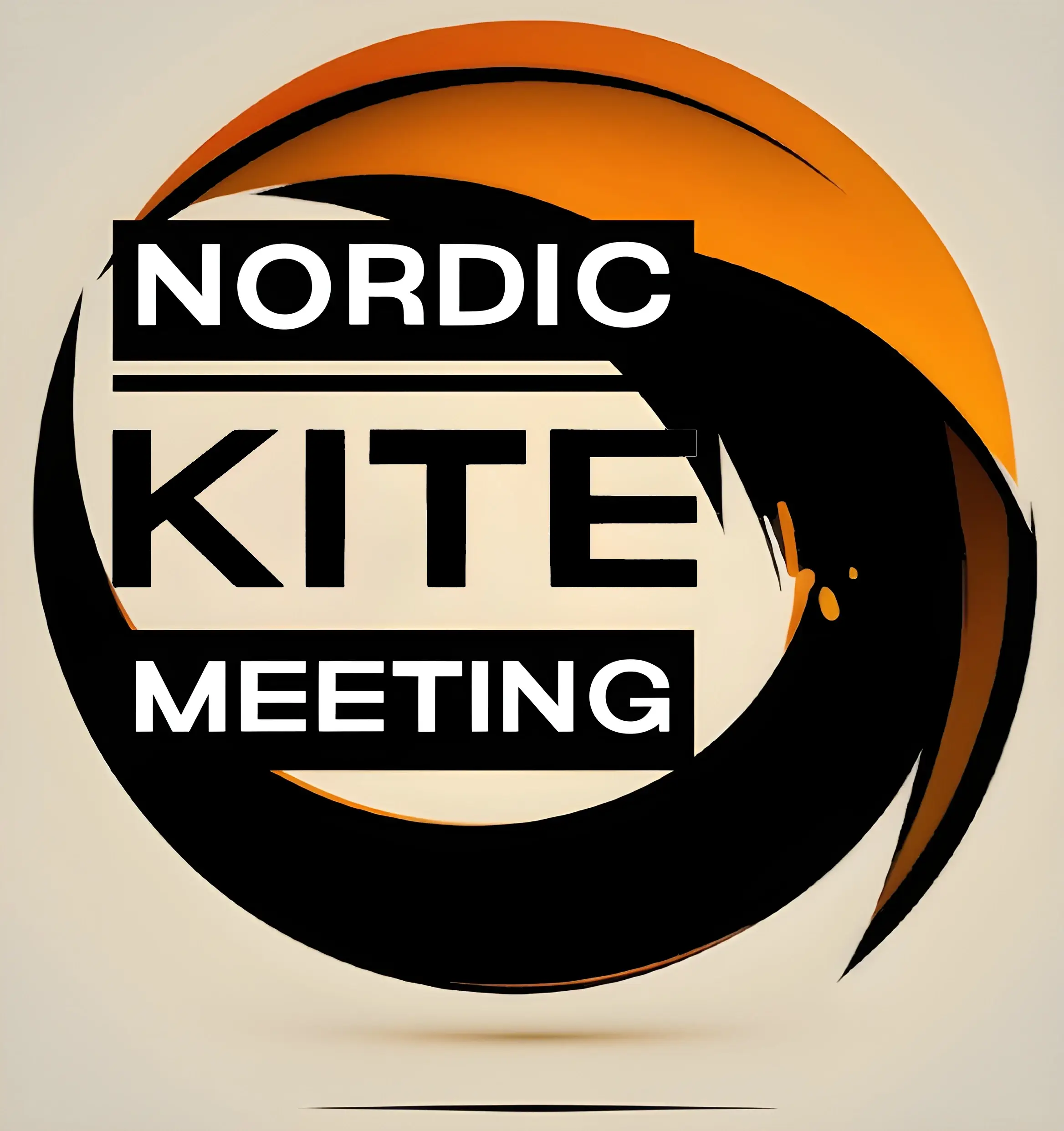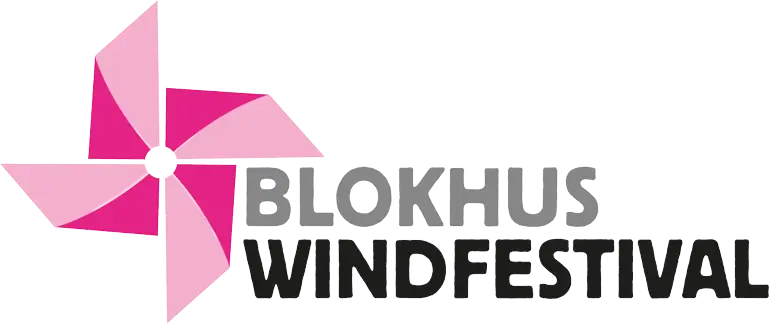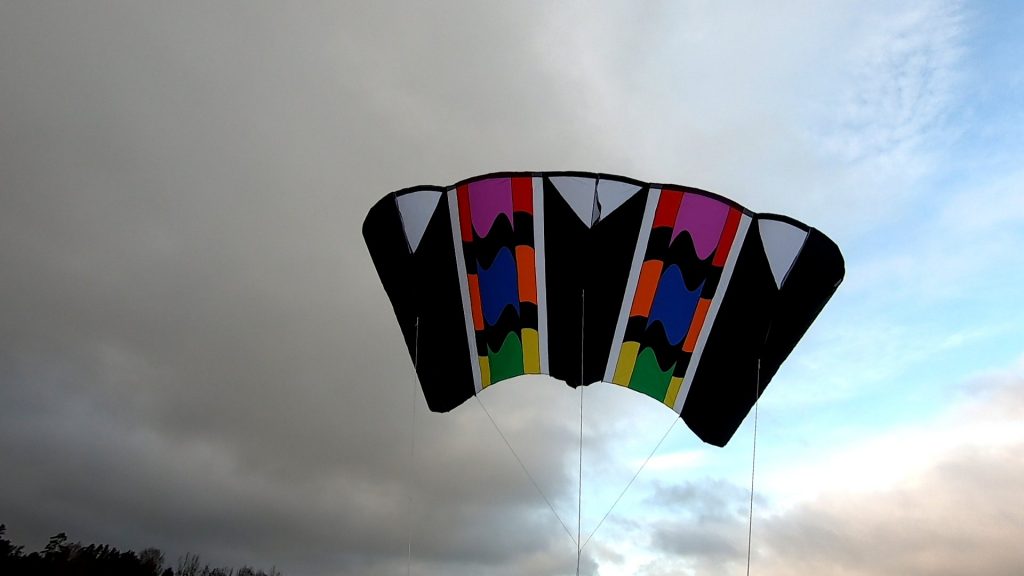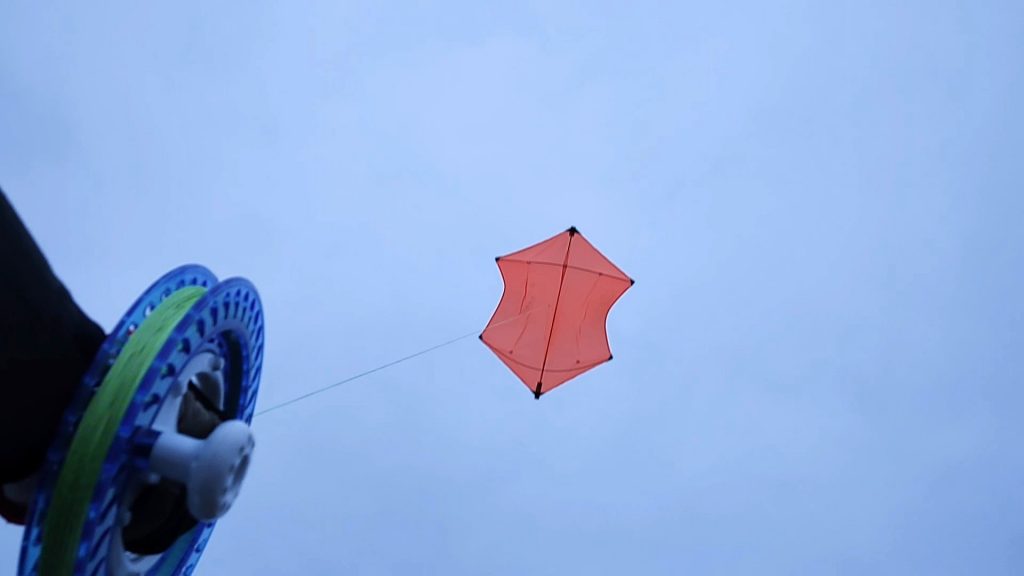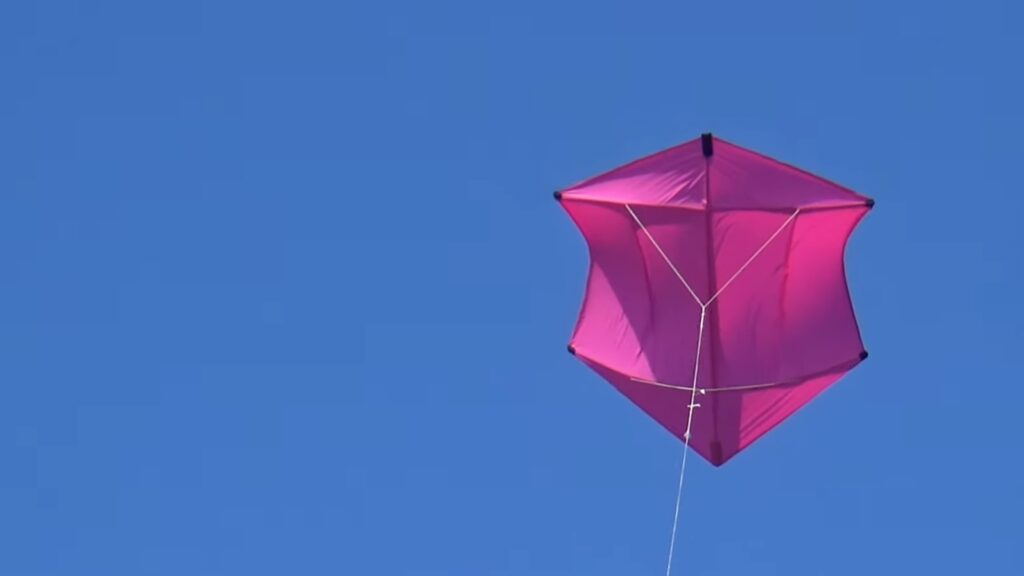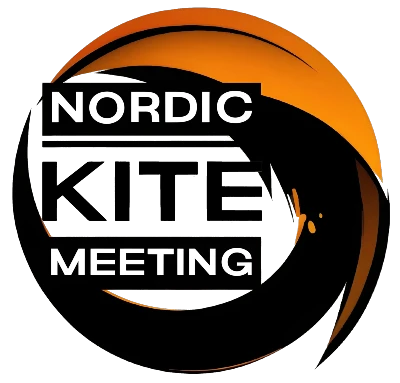Normally, if you put your camera on a tripod that’s basically no problem. The tripod and the camera are stationary and the footage is stable. Even if you hold your camera in your hand while filming, take some precautions and have turned on the camera’s stabilisation features, you should end up with reasonably stable footage.
But what if you have your camera bouncing back and forth up there in the air? What kind of footage will you end up with? Something like this perhaps….
…and please excuse the 2009’ish video quality … and the terrible soundtrack! 😉
But watching that for too long will make you kind of seasick, so how to go about things to increase the rig and the camera’s stability for improved footage?
Well, there are a lot of things that you can do, and as always there’s no “one truth” only. But let me take you through what I do to end up with a good result!
The Kite
Well… as you probably know, You cannot change the wind so you better adjust your sails! So … how do you go about that?
Well, there are several ways to cope with that and the first thing to do is to pick the right kite for the current conditions. And that might be easier said than done!
I guess there are many kites that can do a good job if lifting the KAP-rig and depending on who you ask, you will get different answers to the question: what kite to use?
In *my* kite bag I have three different types of kites that I use for lifting my rig:
My fave kites for kite aerial photography!
As a rule of thumb, I fly the Rokkakus in lighter winds and the Pilot Foil and Sled Kites in higher winds, but you know, there are always exceptions to this.
Rokkakus
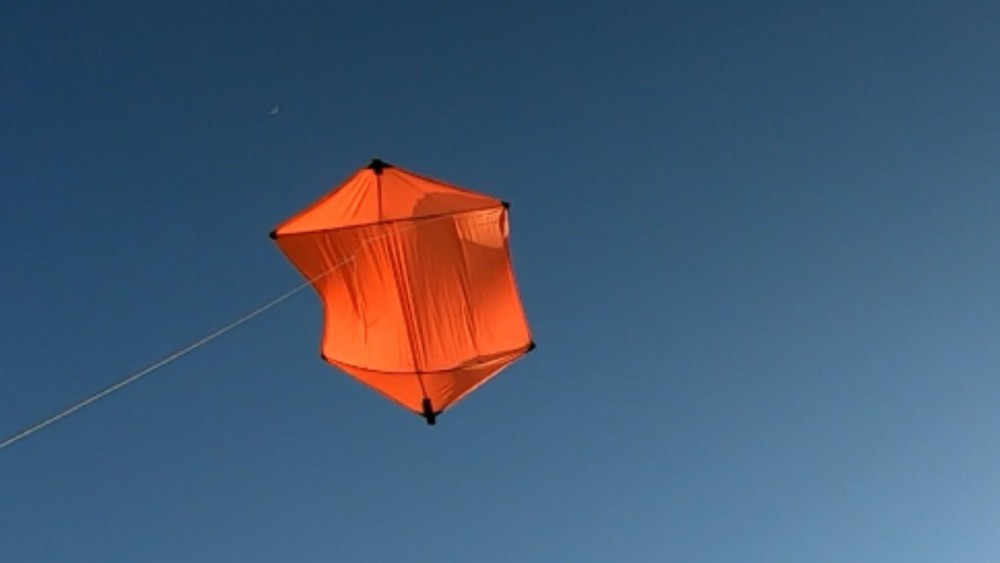
My Rokkakus comes in different sizes so I can use the larger ones in lighter winds and the smaller ones when the wind is picking up. And, WOW! what gracious flyers they are!
Yes, it’s a simple kite and you can easily make them out of one piece of fabric only … or … if you’re in that mood, there are no limitations to the creativity you can put into them using the large sail as a canvas for your artwork!
And when you get it right the Rokkakus are almost literally glued to the sky! With the right tuning of the bowlines and the bridle – and given a reasonably smooth wind – they’re incredibly stable in flight.
However, the Rokkakus are framed so when the wind picks up (significantly) or gets really choppy, they are prone to distort their form and the spars might break. That’s the reason why I fly them in low(ish) to medium wind only.
Foil kite
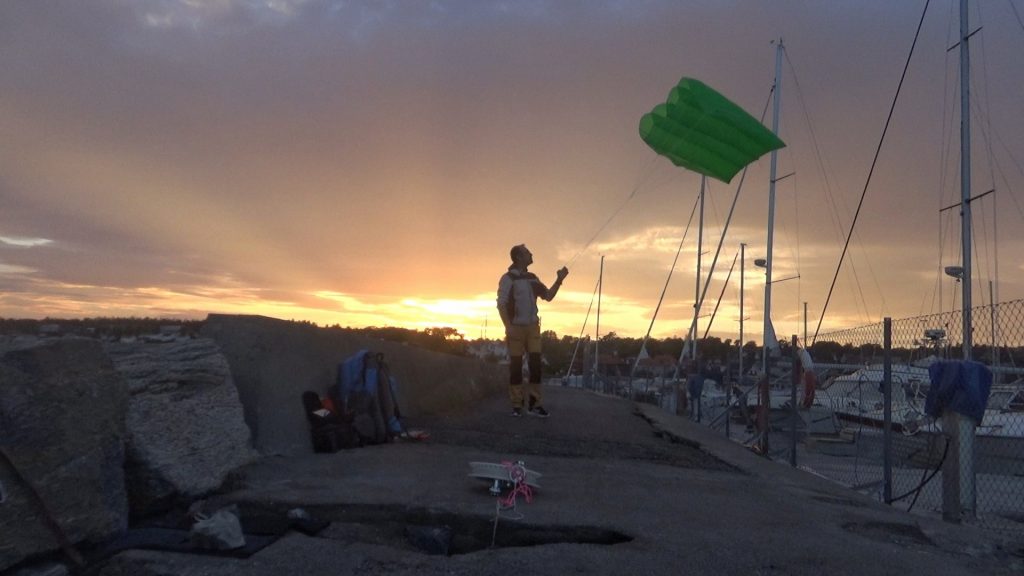
So when I get too nervous flying the Rokkakus I go for a foil kite. Foil kites are soft kites based on the design of the parafoil. They consist of a number of cells running fore to aft, some or all of which are open at the front to allow air to inflate the kite so it takes on an aerofoil shape. Due to the amount of power that these kites can generate, they can be used for a variety of different activities, including kite aerial photography.
I have the Peter Lynn Pilot Kite, which is a foil, a sparless kite. No spars to break and its smaller size makes it a good lifter when the wind is really picking up, and the 2.0 can surely deal with some pretty heavy winds.
For added stability, I often attach a tail to the Pilot Kite.
Power Sled Kites
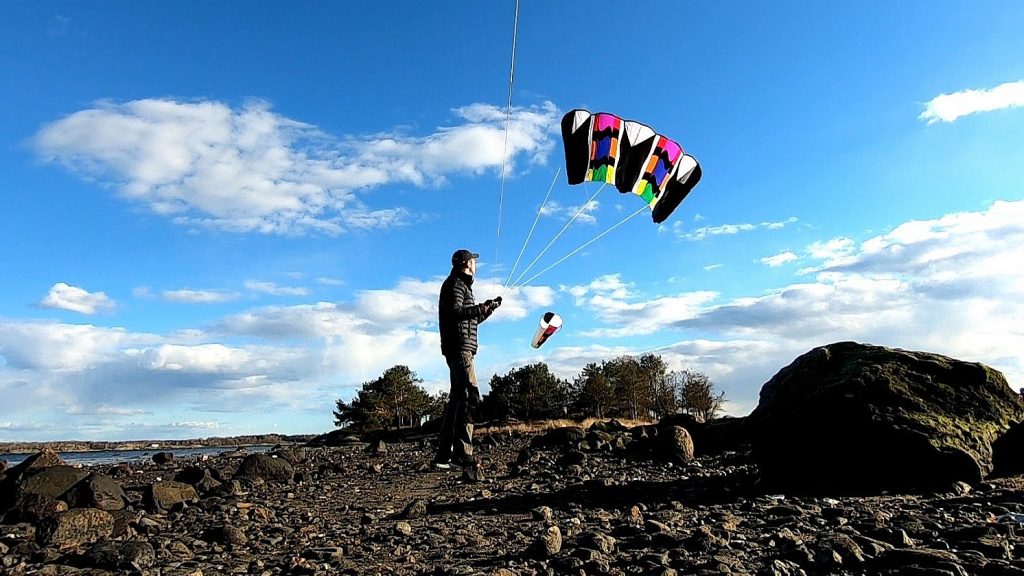
The Power Sled was designed to lift as much laundry as you dare to tie onto your line. This kite is an excellent choice for kite aerial photography My Power Sled kites include a drogue chute bag that also works as storage. Just take the kite out of its bag, hook it to a flying line and you’re ready to fly!
As said, these kites pull quite a lot so make sure to use a flying line that can take that pull without breaking.
The Power Sled uses thin and elastic glass fibre rods to form its shape so there are rods in there that might break. However, the rods are really elastic and they sure can take a beating and I’ve never experienced any mishaps.
I must admit that I haven’t been using these kites much for kite aerial photography and for some reason I find them a bit unstable. That might be because I’ve mostly been using them in stronger and more turbulent conditions so I might have gotten the wrong impression. I promise you that the next time I go out for some KAP – and the winds are smooth – I’ll bring the Power Sleds and see how they perform under better conditions.
Update, July 15th 2022
I guess I’ll kind of have to eat my words. I brought a pair of Power Sleds to do some stability testing and hopefully some KAV the other day. The wind was onshore, nice and stable, and between 5 to 7 meters per second. The smaller one (Power Sled 24) was just really stable up there and I made really good aerial footage.
You can read more here!
Conclusion
Yes, I do know that there are a lot of other kites out there that will serve your kite aerial photography perfectly. I won’t get into them right now, but if you’re interested just do a Google search!!
For my KAP activities, I’m very well off with that handful of Rokkakus, the soft, sparless Pilot Kite and a couple of Power Sleds. I’m pretty sure – if you dive deep enough into your kite bag – that you can find a kite that will lift your KAP rig with ease too!
Listen to this!


